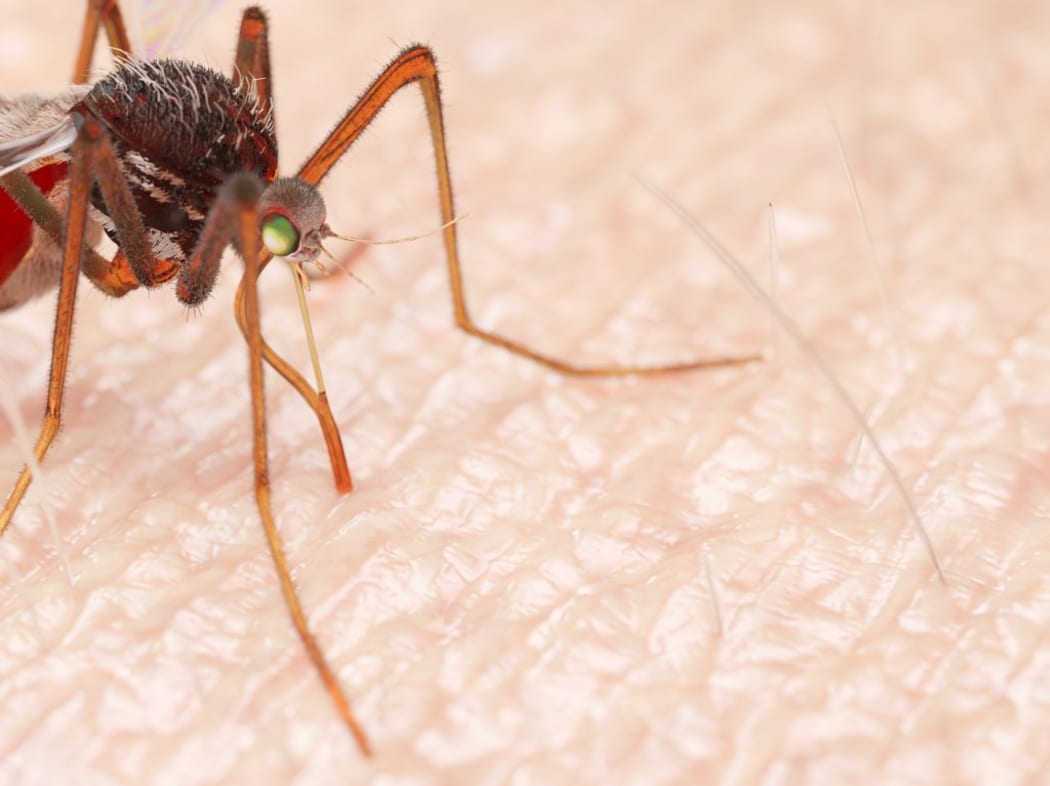An experiment using spider venom-infected fungi to control mosquitoes in Burkino Faso has been remarkably successful.
RNZ science correspondent Siouxsie Wiles told Kathryn Ryan the new approach could help in the fight against malaria where mosquitoes have become resistant to insecticides.

Photo: SCIEPRO/SCIENCE PHOTO LIBRARY
“Malaria is a big issue, it kills lots and lots people and the problem is mosquitoes that carry this malaria parasite are becoming more and more resistant to the insecticides that are used.”
A common method to protect people from malaria has been for them to sleep under nets coated with insecticide, but that is becoming less effective.
This particular fungus has been genetically engineered to deliver an insecticidal toxin to the mosquito.
It's first test outside of the lab was “phenomenal”, Wiles says.
“The researchers basically found this fungus that naturally infects and kills insects, and there are different strains of it that are specific to different insects, and so they found a strain that naturally infects mosquitoes.”
This was some years ago, she says, but there was a snag .. it didn’t kill quickly enough to prevent the mosquito biting and transferring the malaria parasite.
So researchers decided to super-charge the fungus.
“They've taken a toxin that basically comes from spider venom and they have put a little switch on it so that the fungus, they've engineered it into the fungus, will only turn on that gene to produce the toxin when it comes into contact with the immune cells of mosquitoes.”
When these fungi come across a mosquito they burrow through its cuticle into the insect and kill it, Wiles says.
To test the theory, they built a mosquito sphere in Burkino Faso.
“The mosquito sphere is a 600 square meter greenhouse, but instead of it being glass walled it's got mosquito net walls. Within this big structure of various chambers, all kind of sealed off with these mosquito nets, in the chambers are basically the huts that people in that part of Africa live in.”
Wiles says inside the sphere are plants and pools in which mosquitoes can breed as well as a source of food for the mosquitoes.
“They started by asking people to collect the larvae of mosquitoes and then they popped them inside this little mosquito sphere and allowed them to reproduce so they then had lots and lots of mosquitoes and then they basically popped them into the different chambers with different conditions.”
In one area of the sphere was a black plastic sheet smeared with sesame oil and ordinary fungus in another a sheet with genetically tweaked fungus.
“They counted the number of mosquitoes every day, for 45 days to see what happened and the little chamber that had the spider venom fungus managed to make the population crash, after 45 days there were only 13 mosquitoes and that's not enough for them to form a swarm and do their breeding.”
Associate Professor Dr Siouxsie Wiles is the head of Bioluminescent Superbugs Lab at the University of Auckland.

